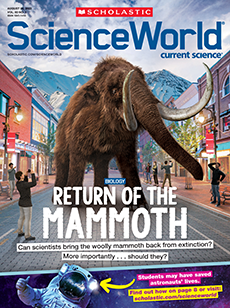Climate change can seem overwhelming. Around the world, the burning of fossil fuels—like oil, gas, and coal—releases greenhouse gases that trap heat in Earth’s atmosphere. It’s easy to wonder: What can one person do about a problem so big that it affects the whole planet?
Mateo De La Rocha, a teen in North Carolina, pondered that very question. Then, a few years ago, he and two friends found a way to help—by tackling a climate issue that wasn’t receiving much attention. Mateo and his classmates raised money to help stop the leakage of greenhouse gases from an abandoned oil well drilled by a company that collected oil from deep within Earth. With their support, the well was successfully plugged last spring. Now the students are pushing to cap another well—and hoping their effort encourages others to create positive change.
Climate change can seem like too much to deal with. Around the world, people burn fossil fuels like oil, gas, and coal. This releases greenhouse gases that trap heat in Earth’s atmosphere. The problem is so big that it affects the whole planet. You might wonder: What can one person do about it?
Mateo De La Rocha thought about that question. He’s a teen in North Carolina. A few years ago, he and two friends found a way to help. They tackled a climate issue that wasn’t getting much attention. Greenhouse gases were leaking from an abandoned oil well. A company had drilled the well to collect oil from deep within Earth. Mateo and his classmates raised money to stop the leaking. With their help, the well was plugged last spring. Now the students are pushing to cap another well. They hope this encourages others to create positive change.

